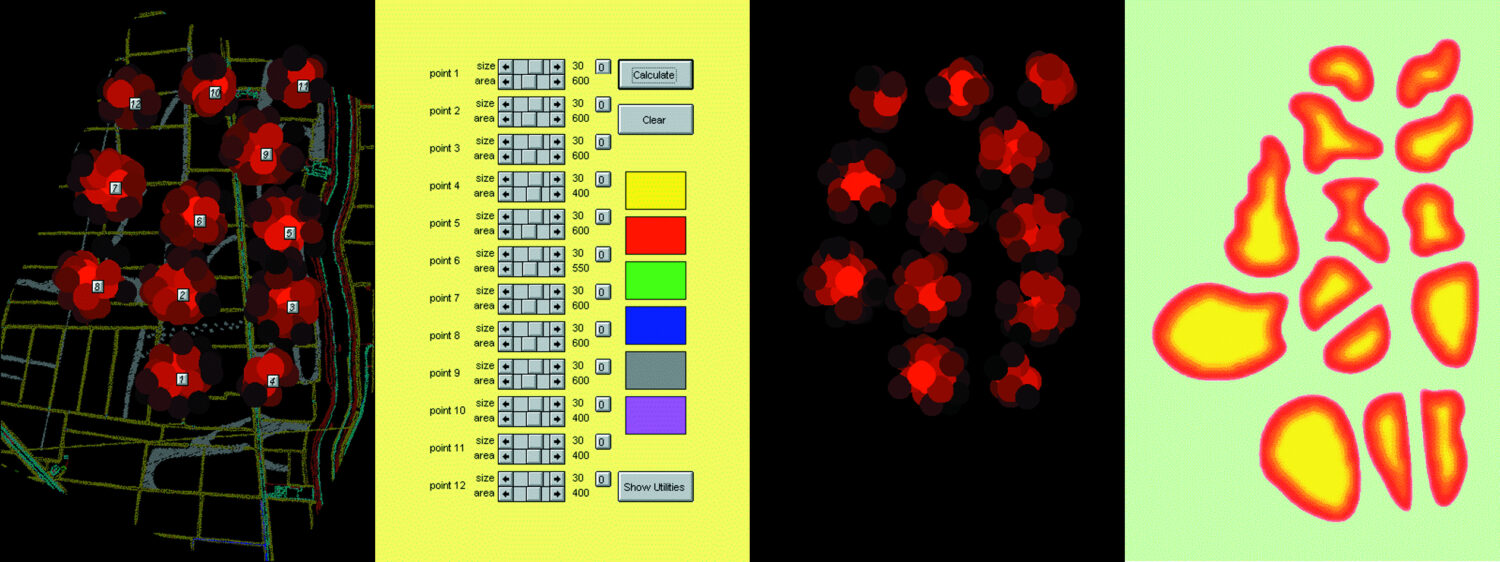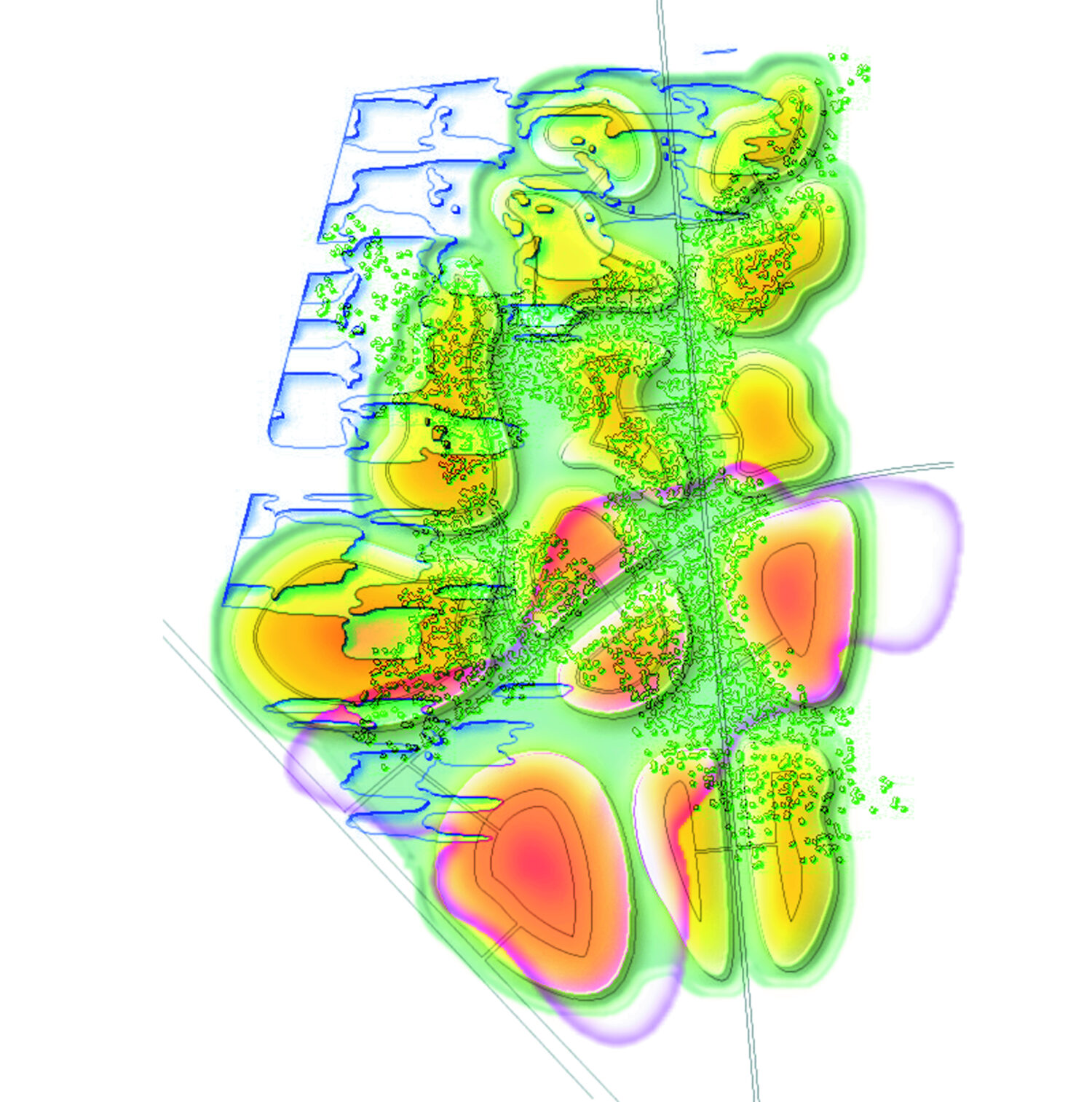
Attractor Game
In the late nineties we designed another city with 1500 inhabitants, Reitdiep, north of Groningen. We developed the parametric design instrument Attractor Game to drag and drop the main constituent components into the digital working space. Attractor Game has water components, tree components, housing components and public components, the master plan is developed by carefully positioning the attractors and by setting the parameters. The purpose of Attractor Game is to make design decisions verifiable, quantifiable and qualifiable, based on simple rules that build optimal conditions for diversity. A series of sliders are used to vary the parameters for the strength and the area of influence of the attractor. After placement of the attractors a self-written routine scans the image, translates the brightness of the colored areas into quantified blocks proportional to the brightness; thus, the total m3’s of water, the total number of trees, the areas for housing for public facilities, and their coordinates, are known and form the basis for further design decisions. The housing domains form an archipelago of islands inside a smooth network of spacious green corridors. Stepping out of the backyard of the house means stepping directly into nature, the citizens are able to walk for kilometers without crossing a street. Water bodies, trees, housing and public facilities are subsequently superimposed on top of each other and on top of the existing landscape, and overlap to form challenging new combinations. One particular home might be located on a water parcel, and must take into account the trees that are planted before the house is built. Some simple design rules create the serendipitous diversity, as is intended in the Strook door Nederland, but taking a different more complex shape.

